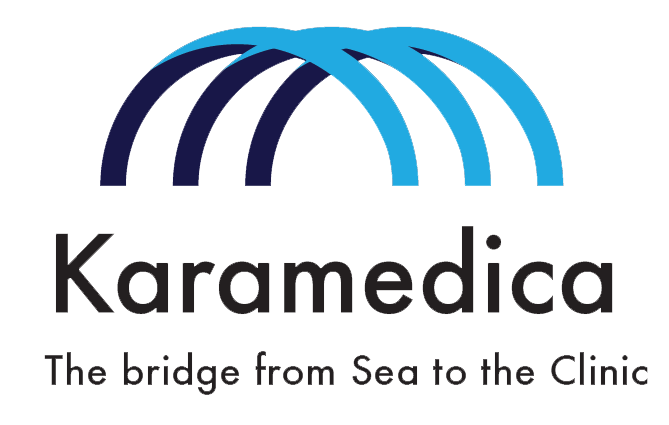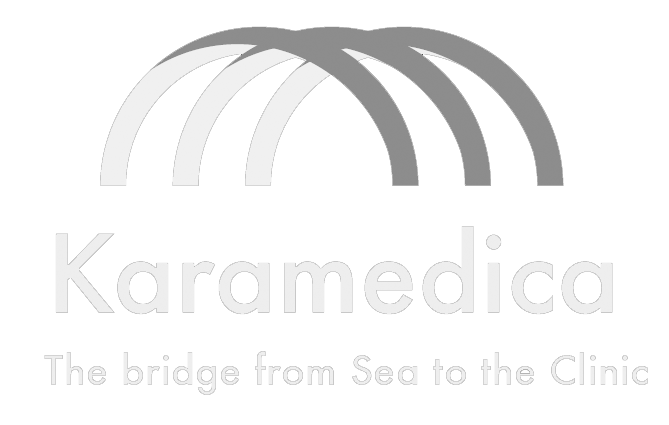KARAMEDICA TECHNOLOGY
Plasma is the key technology of our business.
Karamedica’s founders have developed and patented non-thermal atmospheric pressure nitrogen plasma technology for decontamination of delicate biomaterials, like chitosan. This innovation overcomes the major barrier that has prevented use of many delicate materials in medicine, namely the damaging effects of standard sterilization techniques such as gamma irradiation and dry or wet heat and residual toxic compounds left in such materials after treatment with ethylene oxide gas.
Plasma is the fourth state of matter, after solid, liquid and gas. Lightning, the Northern Lights (aurora borealis), and the sun are natural examples of plasma. Artificial plasmas include arc-welders and fluorescent/neon lights. Gases become plasmas when a specific voltage is applied to a gas, which produces unique properties such as conductivity, magnetism, quasi-neutrality and high concentrations of ionized gas molecules and free radicals that are superb at destroying viruses, microbes, and endotoxins. We seek to harness the decontamination capabilities of plasmas for use in medicine. To this end, Karamedica, Inc. is working closely with the Department of Nuclear Engineering at North Carolina State University to build and develop plasma treatment systems that are optimized for treating chitosan and virtually any other medical material. Historically, low-temperature plasma instruments have been used in the technology sector for altering the surface chemistry of materials such as those used in semiconductors and cell phones. Thus, commercially available plasma instruments are not optimized for use in the medical field or for delicate biopolymers like chitosan.

A plasma is generated with the Karamedica plasma machine.
Chitosan is the key commodity in our business and is primarily sourced from crustacean shells. In fact, the name of our company – Karamedica – is derived from “kara” – the Japanese word for shrimp.
Chitosan is a biopolymer that has shown tremendous promise in the medical literature as a hemostatic agent, immune adjuvant, drug delivery vehicle, tissue scaffold, and many other medical applications. However, its clinical use has been limited to topical hemostasis due to difficulties in decontaminating chitosan using standard techniques such that it meets regulatory standards for implantation in the body while maintaining its advantageous biological properties. Karamedica’s technology overcomes this barrier, which will allow chitosan to be used in a wide-variety of medical applications.
Karamedica is focused on developing chitosan for clinical use as an implantable hemostatic device for controlling bleeding during surgery and a drug delivery vehicle for both superficial bladder cancer and cerebral amyloid angiopathy (CAA). CAA is a co-morbidity of Alzheimer’s disease (AD) that afflicts up to 90% of patients with AD. Karamedica’s implantable hemostatic device stops intraoperative bleeding and is resorbed by the body, much like resorbable sutures are resorbed over time. The superficial bladder cancer therapy Karamedica is developing consists of a chitosan hydrogel admixed with interleukin-12, a potent anti-tumor molecule. Studies conducted by Karamedica’s founders and other independent laboratories have shown complete bladder tumor eradication in mice with chitosan and interleukin-12 (see figure below).

Left image shows mouse with a bladder tumor consisting of bladder cancer cells transfected with a luciferase gene that causes these cells to emit light (bioluminescence). The heat map shows the intensity of bioluminescence and provides confirmation that the mouse has a bladder tumor. Right image shows the mouse after treatment with plasma-sterilized chitosan + interleukin-12. The lack of bioluminescence confirms that the tumor has been eradicated by this immunotherapy.
Karamedica’s therapy for CAA consists of a chitosan microparticle (see image below) that will deliver genetic payloads, such as plasmids or small inhibitory RNAs, to specific cells of the body using a precise targeting system.The targeting technology ensures that the therapeutic is only delivered to the cells or tissues of the body that need it. Therefore, this technology might be widely applicable to many drugs and diseases.

Transmission electron microscopy images of Karamedica’s microparticles.

